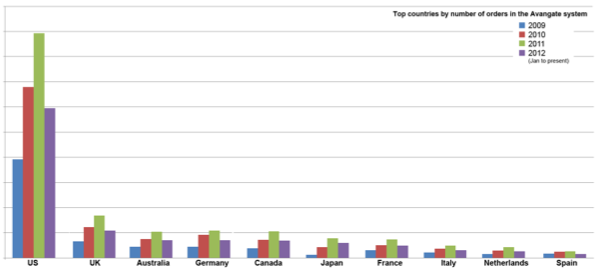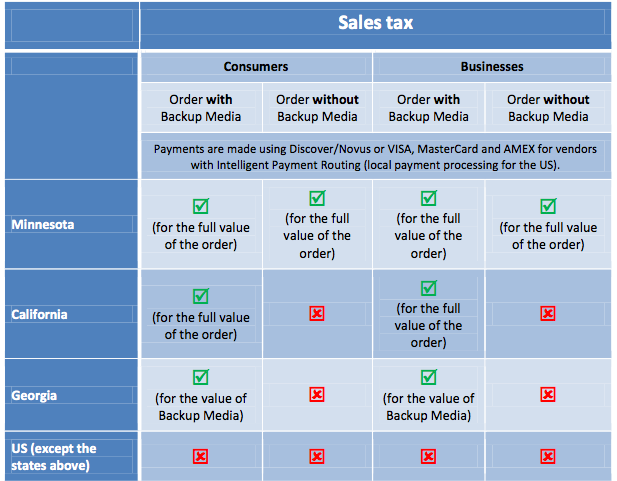Turning Local Eyes into Global Sales

By Michael Ni, CMO/SVP, Marketing and Products for Avangate
Growing businesses often struggle when expanding internationally, finding themselves entering into new markets without a clear strategy to plot out their infrastructure and activities. The costs associated with building proper sales, marketing and IT teams in multiple satellite locations are prohibitively high in many cases, and place an extreme burden on the organizations to "get it right" or suffer heavy losses. Not only this, but establishing satellite locations still limits your business to only having strong insights into very specific locale and peripheral knowledge, at best, about the surrounding region.
Most importantly, the high cost of global expansion, and the haphazard nature under which it often happens, results in a less than fully-baked effort at truly addressing local buyer behaviors and market stipulations. A strong localization effort, however, will address those behaviors and increase conversion rates and overall success significantly.
Where to Begin Practically?
The first step is to assess the top foreign markets driving sales or traffic to your site and balance that with the time they spend on your site. If you're seeing short time spent on your site but lots of traffic from one region or country, it could be that visitors are being confounded by a localized search result. With this data in mind, it's best to assess whether your expansion priorities should be based on gaining competitive advantage, keeping up with competitors, or simply addressing a market that is more valid than initially known for the business.

I Know Where I'm Going, Now What?
It's time to build out your pricing strategy and currency support.
Starting here, the most obvious item on your to-do list is to add the local currency to your site and adjust it to reflect prevailing economic conditions. This means also optimizing your site and shopping cart to only reflect the local currency to ease concerns and quell any questions on the consumers' side about what they are truly paying.
Crucial here are two things: ensure that your shopping cart is as automated as possible when it comes to selecting currencies and language to avoid shopper fatigue, while still offering manual controls. Second is to preserve the initial localized price throughout the lifecycle of the product or service to maintain a lasting recurring revenue engagement with the buyer. Even for this, you need to take into account factors such as fluctuations in exchange rates and change of taxation in certain countries affecting the final price paid by the customer, especially consumers who are more price sensitive.
Getting Paid and Making It Easy
Now you've identified what markets to address, create a foreign-language site and adjust currencies as the beginnings of your endeavor towards generating global revenue. A significant step is offering the preferred payment methods of your target market for as seamless a transaction as possible - any hang-up or questions in the payment process can easily turn a customer away.
Let's look at some options by market:
Europe
- iDeal - In the Netherlands alone, iDeal accounts for 5 million transactions per month and has a high utilization rate at 75 percebt. That number encompasses the fact that iDeal represents 97 percent of the Dutch market.
- Direct Debit - The European Payments Council acknowledges that Direct Debit was responsible for over 17 billion transactions in European markets.
Asia
- Alipay - As the safest and most pervasive payment solution in China, Alipay accounts for over 50 percent of the Chinese market and processes more than 11 million transactions a day.
- JCB Card - With more than 40 percent market share, support for JCB Card for Japanese customers is vital to any vendor's online commerce, followed by the Konbini payment method where customers pay at local convenience stores.
Middle East, Africa & South America
- CashU - Largely focused on the Middle East and North Africa, CashU is highly focused on supporting transactions in the Middle East region.
- Boleto Bancario - Brazilian shoppers utilize Boleto Bancario for nearly 30 percebt of their online transactions, making it one of the largest processors in the growing South American region.
Taxes, Not Death, Are Certain
Understanding and addressing local taxation laws and behaviors are next up in your global expansion. This is about abiding not just by the law, but also by how consumers interact with these laws to ensure that they are not negatively impacted by your pricing and purchasing models.
For instance, if a foreign company is expanding to the US market, leaving sales tax out of the purchase price is a customary practice, with taxes being added upon final authorization of purchase. The below graphic outlines the complexities of taxation in the US:

Conversely, the European custom is to include taxes in the upfront purchase price and tax all items, even if the vendor is from a non-EU market. However, if you are a non-EU resident purchasing from an EU vendor, you are not charged, or are reimbursed, any taxes.
Sales Are Happening, Now Support Them
With all the gritty items out of the way and with new sales coming in from your new audience, the last step in your successful expansion is localizing your support. Creating and actively highlighting local call-center numbers and choosing support personnel that is knowledgeable in language subtleties result in developing a long-lasting relationship with your buyers. Go beyond skin-deep as well, as localized subtleties like date formatting, optimized website layouts, representative graphics and more can also play a key role as your expansion efforts mature.
Looking at all the logistics involved in expanding your business and localizing it for your new markets, it's easy to get overwhelmed by the amount of minute details your business will have to address to be successful. As you look to expand beyond your current borderline, take into consideration all the minutia highlighted above to evaluate the resource strain that your business might not be able to handle as it grows in its home market. The ultimate result of localization is the increase in conversion rates for your business on a global scale.
***
Michael Ni, CMO/SVP, Marketing and Products for Avangate
Michael Ni brings over 20 years of experience as a marketing and product executive in bringing successful innovation-driven businesses to market - from start-up to Fortune 500 companies. Michael's business experience spans across software, telecommunications, consumer packaged goods and digital media.








